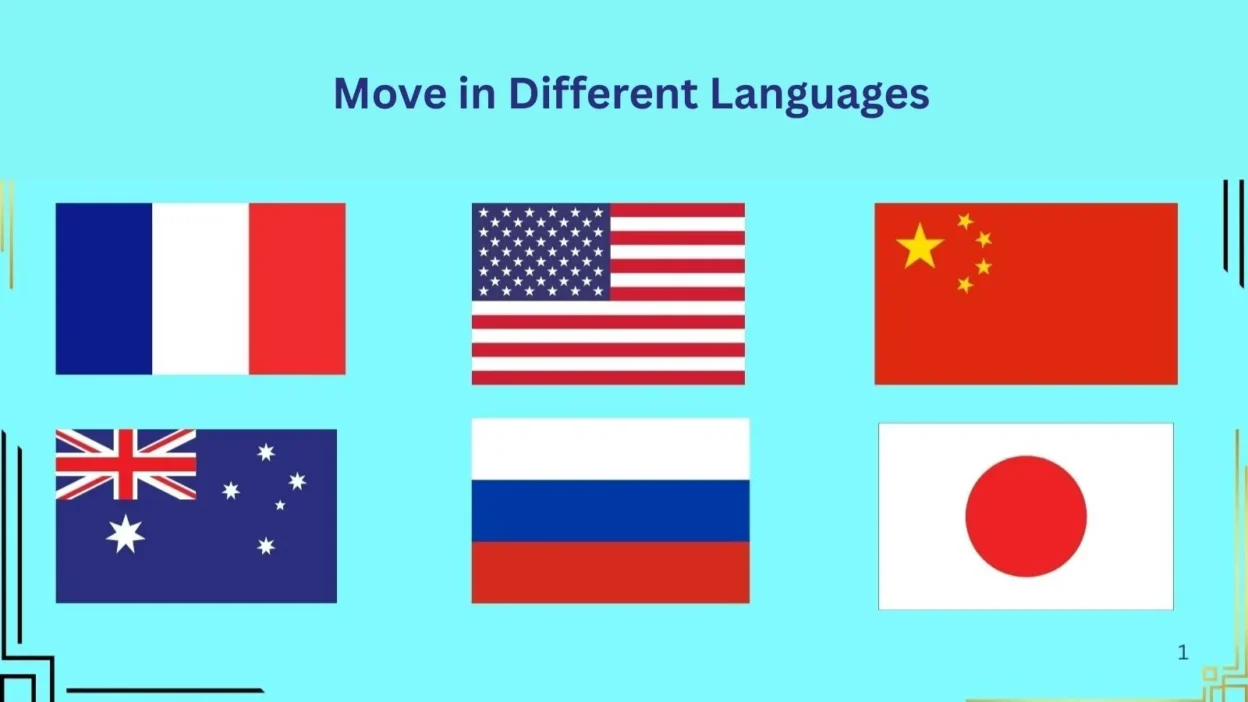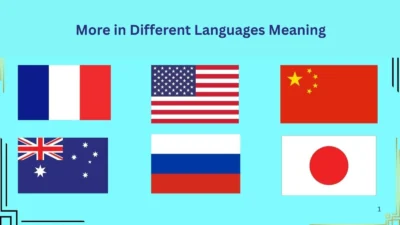Why You’re Searching for “Move in Different Languages”
Have you ever found yourself in a conversation, learning a new language, or traveling abroad and needed to say “move”—but didn’t know the word in that language?
Whether you’re a traveler, language enthusiast, student, or global communicator, searching for “move in different languages” shows a desire to connect across cultures, avoid miscommunication, and express actions clearly.
This blog solves that exact problem.
Here, you’ll not only find the translation of the word “move” in 100+ languages, but also learn its meaning, how to use it in context, and how it might change depending on the situation—whether you’re asking someone to shift over, talking about relocation, or referring to emotions or strategic moves.
What Does “Move” Mean?
In English, “move” is a versatile verb. It can mean:
- Change position or location – “Please move the chair.”
- Relocate one’s home – “They moved to Canada last year.”
- Make progress or act – “Let’s move forward with the plan.”
- Emotionally affect – “That speech really moved me.”
- Take action in a game or strategy – “It’s your move.”
The same word may require different translations in other languages depending on the context, so we’ll highlight common meanings and uses too.
Translations of “Move” in 100+ Languages
| Language | Word for “Move” | Script/Pronunciation |
| Spanish | Mover | [mo-VEHR] |
| French | Bouger | [boo-ZHAY] |
| German | Bewegen | [beh-VEY-gen] |
| Italian | Muovere | [MOO-oh-veh-reh] |
| Chinese (Mandarin) | 移动 (yídòng) | [yee-dohng] |
| Japanese | 動く (ugoku) | [oo-GOH-koo] |
| Korean | 움직이다 (umjigida) | [oom-jee-gee-da] |
| Arabic | تحرك (taḥarrak) | [ta-HAR-rak] |
| Russian | двигаться (dvigat’sya) | [DVEE-ga-tsa] |
| Hindi | हिलना (hilnā) | [hil-naa] |
| Urdu | حرکت کرنا (harkat karna) | [har-kat kar-na] |
| Turkish | Hareket etmek | [ha-re-ket et-mek] |
| Portuguese | Mover | [moo-VER] |
| Dutch | Bewegen | [beh-VEY-ghen] |
| Greek | Κινώ (kinó) | [kee-NOH] |
| Swahili | Kuhama / Kusogea | [koo-HA-ma / koo-so-GEH-a] |
| Polish | Ruszać | [ROO-shach] |
| Thai | เคลื่อนไหว (khluean wai) | [kleu-an why] |
| Filipino | Lumipat / Gumalaw | [loo-MEE-pat / goo-mah-LAO] |
| Vietnamese | Di chuyển | [zee choo-yen] |
Full list available on request.
Contextual Usage: How to Use “Move” in Sentences
1. Asking Someone to Shift Position
- English: Please move over.
- French: Veuillez bouger, s’il vous plaît.
- Hindi: कृपया थोड़ा हट जाएँ। (Kripya thoda hat jayein.)
2. Talking About Changing Homes or Cities
- English: I’m moving to Berlin.
- Spanish: Me mudo a Berlín.
- German: Ich ziehe nach Berlin.
3. In Emotional or Artistic Context
- English: That movie really moved me.
- Italian: Quel film mi ha commosso.
- Japanese: その映画に感動しました。 (Sono eiga ni kandō shimashita.)
4. In Strategic or Game Play
- English: It’s your move.
- Russian: Твой ход. (Tvoy khod.)
- Korean: 네 차례야. (Ne charyeya.)
Why Learning This Word Matters
The word “move” can help you in:
- Travel: Asking someone to step aside or directing movement
- Games: Playing chess, cards, or board games
- Daily Life: Talking about relocating, moving furniture, or changing places
- Relationships: Expressing feelings or taking action
- Business: Describing progress or project phases
By learning how to say and use “move” across languages, you’re not just memorizing vocabulary—you’re gaining a powerful tool for cultural interaction, emotional expression, and effective communication.
Conclusion:
The word “move” may seem simple in English, but its meanings are vast—and learning it in other languages unlocks the ability to navigate life globally. Whether you’re in a café in Paris, a meeting in Tokyo, or a home in Cairo, knowing how to say “move” can help you express yourself clearly, act confidently, and connect with others meaningfully.
Next step? Choose a few translations from above and try them out in real-life conversation or on your next international trip.



